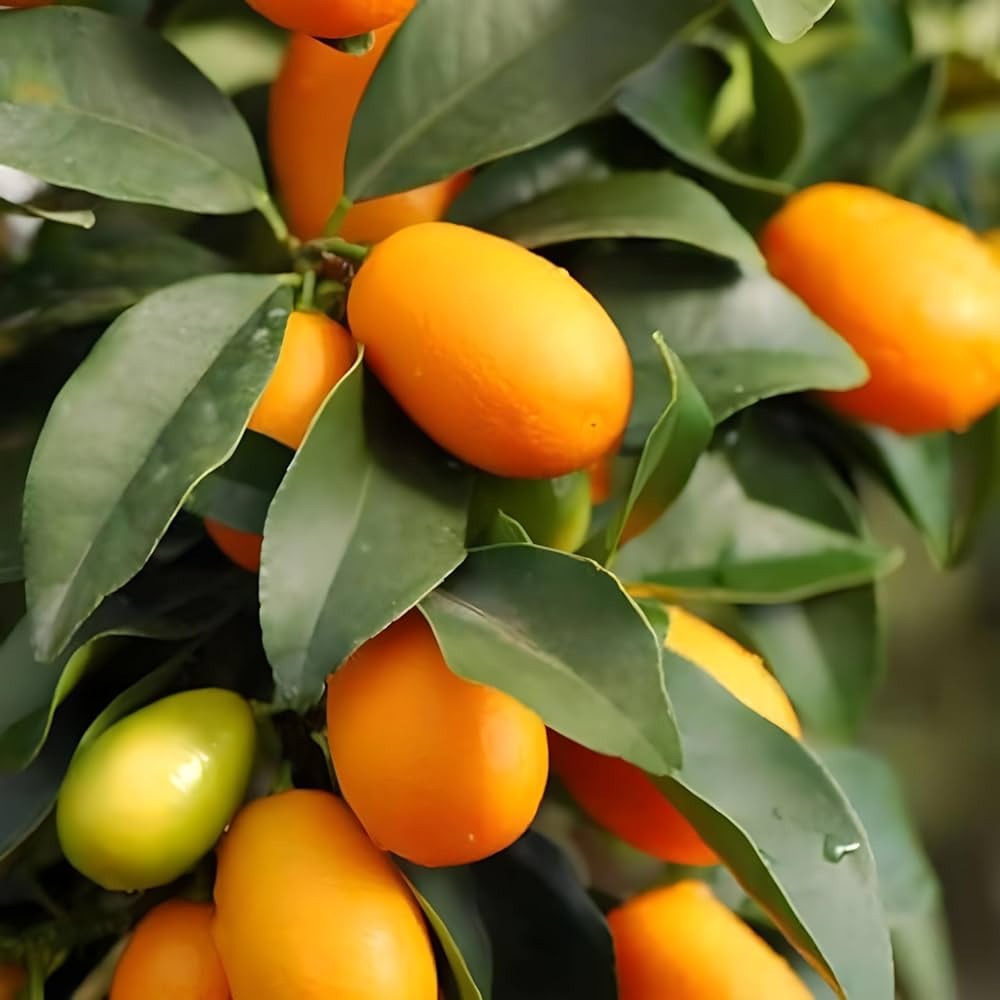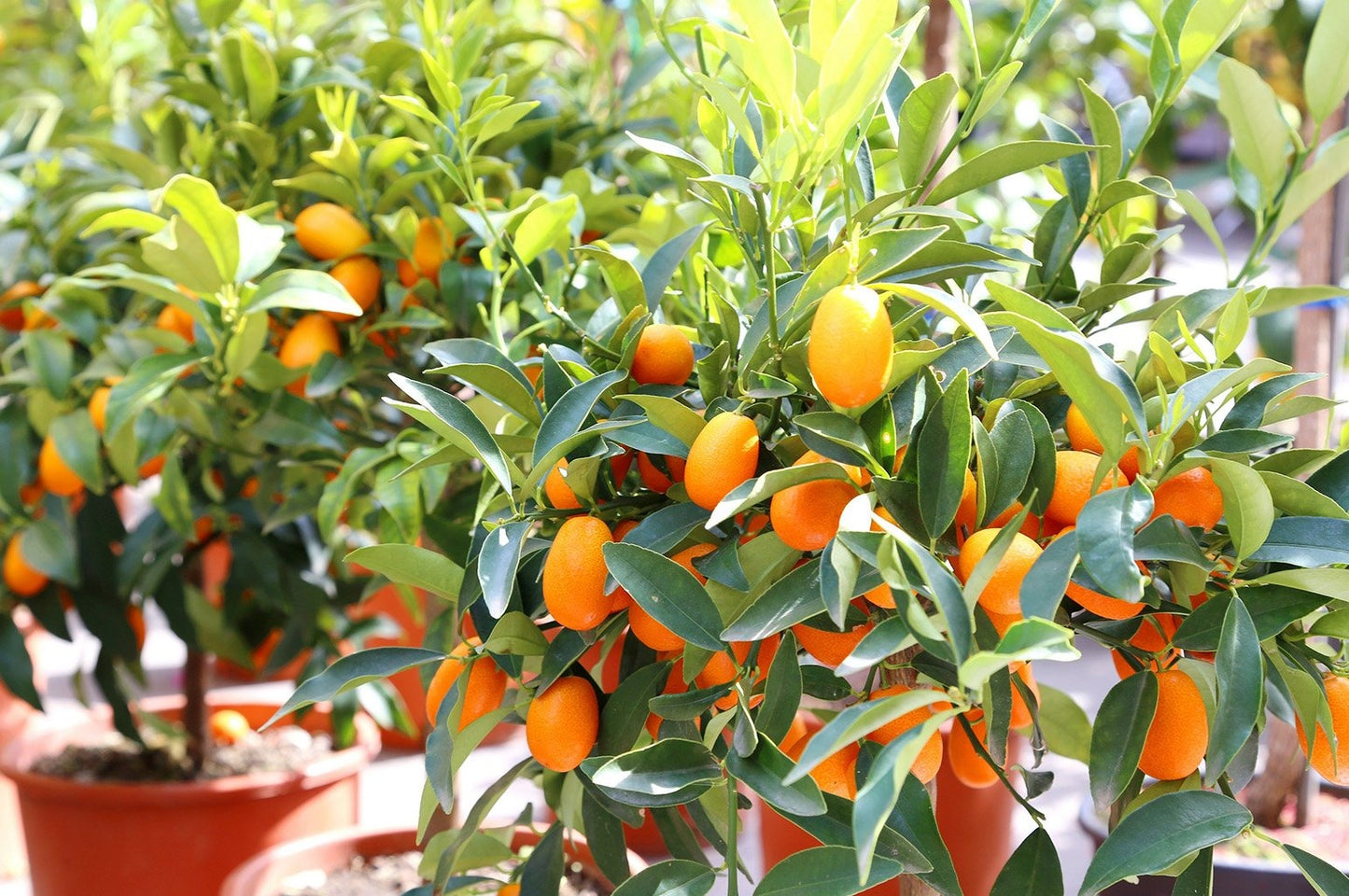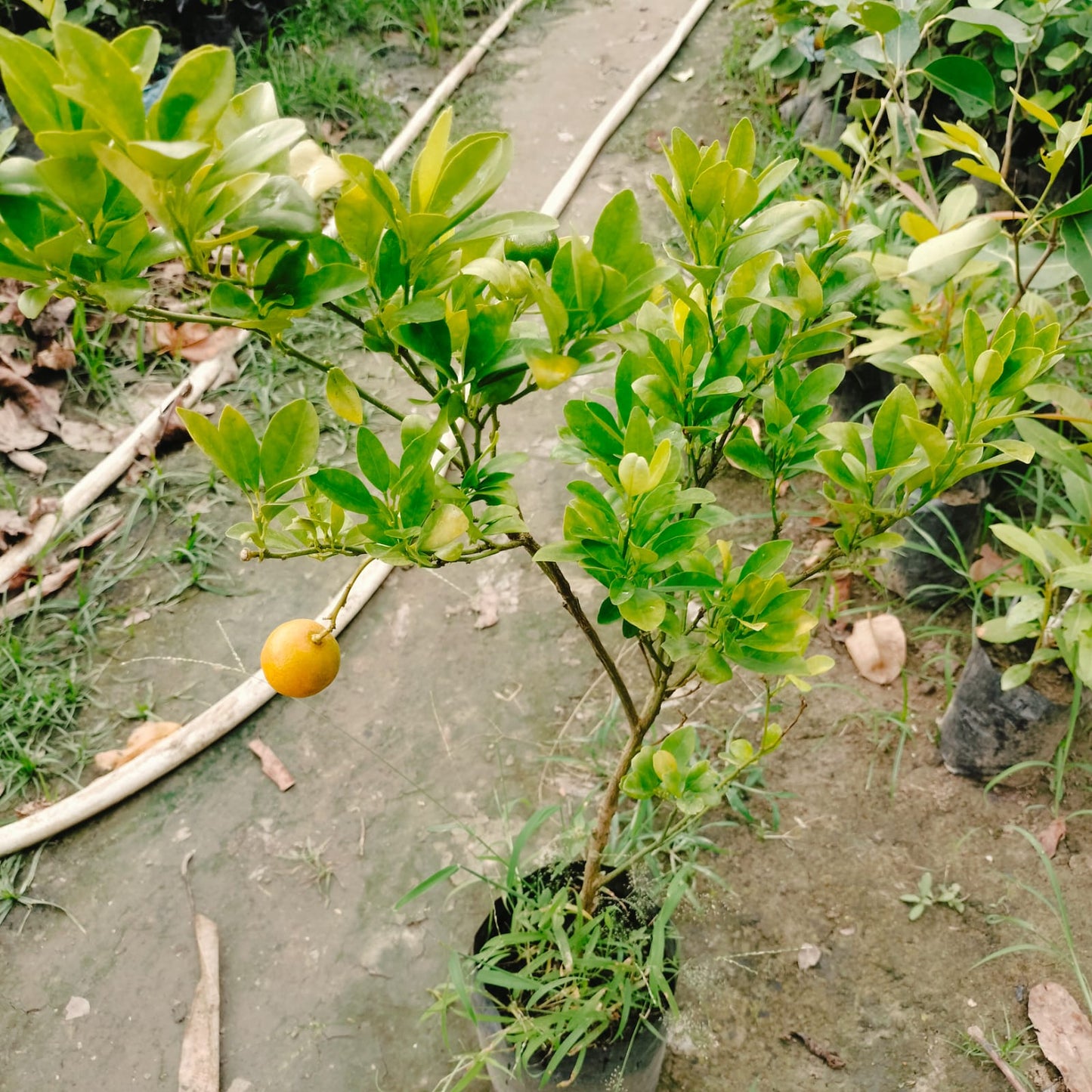Plantparadise
The Kumquat Orange|Kumquat Orange plant for sale
The Kumquat Orange|Kumquat Orange plant for sale
Regular price
Rs. 390.00
Regular price
Rs. 800.00
Sale price
Rs. 390.00
Unit price
per
Couldn't load pickup availability
The Kumquat Orange, scientifically known as Citrus japonica (also sometimes referred to as Fortunella japonica), is a small fruit-bearing tree or shrub that belongs to the Rutaceae family. Here is a detailed description of the plant:
Physical Description
- Size: The kumquat tree is relatively small, typically growing to a height of 8 to 15 feet (2.4 to 4.5 meters). Dwarf varieties can be smaller and are often grown in pots.
- Leaves: The leaves of the kumquat are dark green, glossy, and lance-shaped. They are typically about 2 to 3 inches long and have a leathery texture.
- Flowers: The plant produces small, fragrant white flowers, usually in late spring or early summer. These flowers are similar in appearance to other citrus blossoms.
- Fruit: The fruit is small, oval or round, and usually measures about 1 to 2 inches in diameter. The skin is bright orange or yellow-orange, thin, and sweet, while the flesh inside is tart and juicy. The fruit is typically eaten whole, including the skin.
- Thorns: Some kumquat trees have small thorns on their branches, though this can vary between varieties.
Growth Conditions
- Climate: Kumquats thrive in warm climates and are hardy to USDA zones 8-11. They can tolerate cooler temperatures better than many other citrus plants and can withstand brief periods of frost.
- Sunlight: They require full sun for optimal growth and fruit production.
- Soil: Kumquats prefer well-drained, slightly acidic soil. They do not tolerate waterlogged conditions well.
- Watering: Regular watering is essential, especially during dry periods. However, the soil should be allowed to dry out somewhat between waterings to prevent root rot.
- Fertilization: Regular feeding with a balanced citrus fertilizer helps promote healthy growth and fruit production.
Cultivation and Uses
- Propagation: Kumquats can be propagated by seeds, cuttings, or grafting. Grafting onto rootstocks can help improve disease resistance and vigor.
- Pruning: Pruning is generally minimal but can be done to maintain shape and remove any dead or diseased branches.
- Harvesting: The fruit is typically ready to harvest in late fall to early winter. It can be picked when it has reached full color and is slightly soft to the touch.
- Uses: Kumquats are commonly eaten fresh, with the skin providing a sweet contrast to the tart flesh. They can also be used in marmalades, jellies, desserts, and as a garnish. Additionally, kumquats are often used in ornamental landscaping due to their attractive foliage and fruit.
Materials
Materials
Shipping & Returns
Shipping & Returns
Dimensions
Dimensions
Care Instructions
Care Instructions






